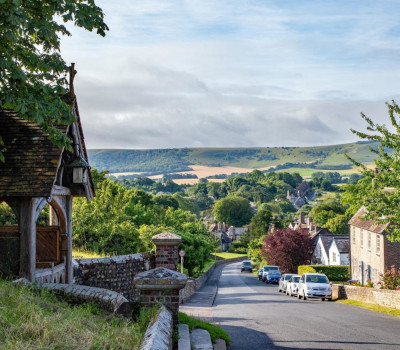Our journey begins with a captivating snapshot by camera club member Philip Carter, who recently captured the village's nostalgic appeal. His lens unveiled the breathtaking views over the South Downs National Park, including the iconic Mount Caburn. This Sussex landmark, with an Iron Age hill fort at its summit, is a testament to the region's ancient past.
But that's not all Mount Caburn has to offer. It was here that Southdown sheep were first reared by John Ellman, a resident of Glynde's Place Farm. This nod to the county’s agricultural past adds another layer to Glynde's rich historical tapestry.
As we wander through the village, the medieval parish church of St Mary the Virgin captures our attention. Rebuilt between 1763 and 1765, it stands as a testament to Glynde's enduring spirit.
Our journey through time continues with Glynde Place, a 16th-century Elizabethan Grade I listed manor house. Still home to the Glynde estate today, it's currently under the stewardship of Francis and Caroline Hampden and their three children. The manor's continued occupation by the same family echoes the village's deep-rooted sense of community and tradition.
Glynde's historical charm extends to its transport links. The village's railway station, built in 1846 and electrified in 1935, remains a prominent feature, connecting Glynde with the wider world while retaining its vintage appeal.
With over 27 listed Historic England buildings, Glynde is a living museum of Sussex's past. Whether you're a history enthusiast or a nature lover, Glynde offers a unique blend of heritage and beauty that promises a memorable visit. Come and discover the hidden gem of East Sussex for yourself.











